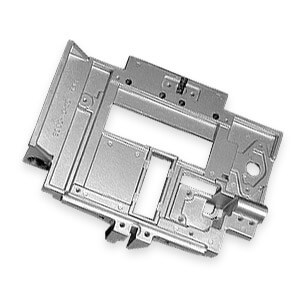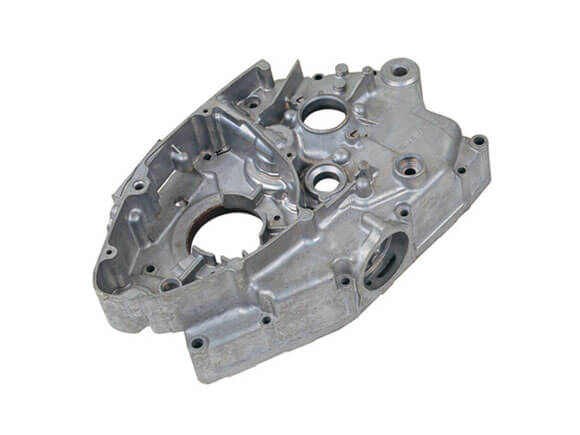How to partner with an Aluminum Foundry for customized results
Wiki Article
The Advancement of Aluminum Spreading Techniques
Over the decades, different cutting-edge methods have actually transformed aluminum casting, considerably boosting its performance and precision. The advancement started with standard sand casting techniques, which, while reliable, commonly resulted in disparities in surface coating and dimensional precision. The intro of die casting in the mid-20th century permitted faster production rates and enhanced top quality, as liquified light weight aluminum was forced into mold and mildews under high pressure, minimizing porosity and improving information.More innovations included investment spreading, which gave also finer resistances and elaborate styles. The emergence of computer numerical control (CNC) technology also transformed mold and mildew layout, enabling manufacturers to produce complicated geometries with exceptional precision. Today, additive manufacturing strategies, such as 3D printing for creating mold and mildews, get on the increase, enabling fast prototyping and reduced preparations. On the whole, these advancements have actually significantly affected the light weight aluminum spreading procedure, catering to a more comprehensive variety of commercial applications.
Benefits of Aluminum in Manufacturing
Light weight aluminum has become a preferred product in manufacturing as a result of its distinct mix of properties that improve performance and effectiveness across various applications. Its light-weight nature permits lowered power usage throughout transportation and assembly, making it a cost-effective choice for lots of industries. Additionally, light weight aluminum exhibits exceptional corrosion resistance, guaranteeing longevity and decreasing upkeep prices.ght proportion enables the production of tough yet lightweight parts, which is specifically advantageous in sectors such as vehicle and aerospace. Aluminum also supplies superb thermal and electric conductivity, making it suitable for a range of industrial applications, consisting of electronics and warmth exchangers.
Additionally, aluminum's pliability allows for complex designs and easy fabrication, assisting in the production of complex shapes without jeopardizing architectural stability (Precision aluminum casting). These advantages jointly add to light weight aluminum's expanding prestige in modern-day manufacturing procedures, driving development and improving product performance throughout a large range of industries
Advancements in Aluminum Spreading Modern Technology
As developments in making innovation continue to advance, developments in light weight aluminum spreading have emerged, boosting performance and accuracy in production procedures. Amongst these advancements is the introduction of sophisticated simulation software application, which allows suppliers to model the spreading procedure essentially. This modern technology allows the prediction of potential defects and enhances mold and mildew design, ultimately lowering material waste. Additionally, the advancement of new alloys has actually broadened the variety of applications for aluminum spreadings, boosting mechanical residential properties and rust resistance.In addition, the fostering of 3D printing for mold and mildew production has reinvented the casting process, allowing the production of complex geometries that were formerly unattainable. This shift not just reduces preparations however additionally helps with personalization in manufacturing. Generally, these advancements contribute greatly to the top quality and convenience of light weight aluminum spreadings, positioning them as a necessary component in the future of making technology.
Effect On Manufacturing Effectiveness and Cost Reduction
While the innovation of aluminum spreading innovations presents various advantages, its most remarkable influence depends on improving manufacturing performance and driving cost reduction. By enhancing the spreading procedure, manufacturers can produce complicated components with greater speed and accuracy, considerably decreasing waste. Technologies such as high-pressure die spreading and progressed mold and mildew designs enable quicker cycle times and boosted dimensional precision, which reduce rework and scrap prices.Additionally, the lightweight nature of aluminum adds to lower transport prices and power usage during manufacturing. As an outcome, suppliers can attain considerable economies of scale, eventually decreasing the per-unit cost of items. The capability to create high-quality castings in bigger quantities likewise makes it possible for companies to respond more swiftly to market demands - Precision aluminum casting. These performance gains and cost financial savings placement light weight aluminum spreading as a competitive benefit in the manufacturing landscape, fostering further investments in modern technology and ability development
Applications of Aluminum Spreading Throughout Industries
The adaptability of light weight aluminum casting has led to its widespread adoption across different sectors, maximizing the advantages of lightweight, sturdy components. In the auto sector, light weight aluminum spreadings are made use of for engine blocks, transmission real estates, and wheels, adding to sustain effectiveness and efficiency. The aerospace sector employs light weight aluminum castings for structural elements, where weight decrease is crucial for flight effectiveness. In addition, the consumer electronic devices field leverages light weight aluminum spreading for gadget housings and components, boosting resilience while preserving a sleek layout. The building and construction sector additionally takes advantage of light weight aluminum spreadings, using them in home window structures and building components that need both strength and aesthetic charm. The medical field utilizes aluminum spreadings for tools and gadgets, where accuracy and dependability are extremely important. Overall, the here varied applications of aluminum spreading across these sectors demonstrate its important role beforehand modern manufacturing methods.
The Future of Light Weight Aluminum Casting in Production
Technology in aluminum spreading innovation assures to improve producing processes in the coming years. Advancements such as 3D printing and computer-aided style are simplifying manufacturing, permitting much more complex geometries and minimized waste. The combination of automation and robotics boosts performance, allowing manufacturers to generate top notch components with minimal human treatment. In addition, the advancement of new aluminum alloys raises toughness and resilience, expanding the possible applications in markets like aerospace and vehicle.As sustainability becomes a priority, reusing capabilities within light weight aluminum casting will certainly improve, lessening environmental influence. The application of clever production strategies, including IoT and information analytics, will even more maximize production operations and upkeep methods. These improvements not only enhance functional efficiency but also lower costs, making aluminum casting a much more attractive alternative for manufacturers. Ultimately, the future of aluminum casting holds guarantee for development, sustainability, and boosted competitiveness in the global market.
Regularly Asked Concerns
What Safety And Security Actions Are Involved in Light Weight Aluminum Casting Processes?
Safety and security measures in aluminum spreading processes include protective equipment, proper ventilation, training on equipment use, routine maintenance of equipment, tracking of liquified metal temperature levels, and adherence to safety methods to stop crashes and warranty worker health.
How Is Light Weight Aluminum Casting Ecologically Lasting?
Aluminum casting is eco sustainable as a result of its recyclability, power effectiveness, and minimized greenhouse gas emissions. The use of recycled light weight aluminum considerably decreases the power required for manufacturing, minimizing ecological impact while conserving natural resources.What Are Common Flaws in Light Weight Aluminum Castings?
Common problems in aluminum castings include porosity, shrinking, misruns, chilly shuts, and additions. These concerns can arise from inappropriate temperature control, inadequate mold and mildew design, or contamination, impacting the overall quality and integrity of the end product.Can Light Weight Aluminum Casting Be Recycled?
Yes, light weight aluminum spreading can be reused. The reusing process minimizes energy usage and environmental impact, allowing for the reuse of light weight aluminum in new items. This sustainability aspect enhances its charm in numerous production markets.What Industries Mainly Make Use Of Light Weight Aluminum Spreading?
Aluminum spreading is largely utilized in the vehicle, aerospace, customer goods, and electronics sectors. These industries gain from light weight aluminum's lightweight, corrosion-resistant properties, boosting product performance, efficiency, and resilience across various applications and elements.
Over the years, different innovative strategies have transformed light weight aluminum spreading, considerably improving its performance and accuracy. As improvements in producing technology continue to progress, technologies in light weight aluminum spreading have actually emerged, enhancing effectiveness and precision in production procedures. While the innovation of light weight aluminum spreading innovations introduces numerous benefits, its most notable effect lies in boosting manufacturing effectiveness and driving price decrease. The aerospace market employs aluminum spreadings for architectural parts, where weight decrease is important for flight efficiency. Light weight aluminum casting is ecologically sustainable due to its recyclability, power effectiveness, and decreased greenhouse gas discharges.
Report this wiki page